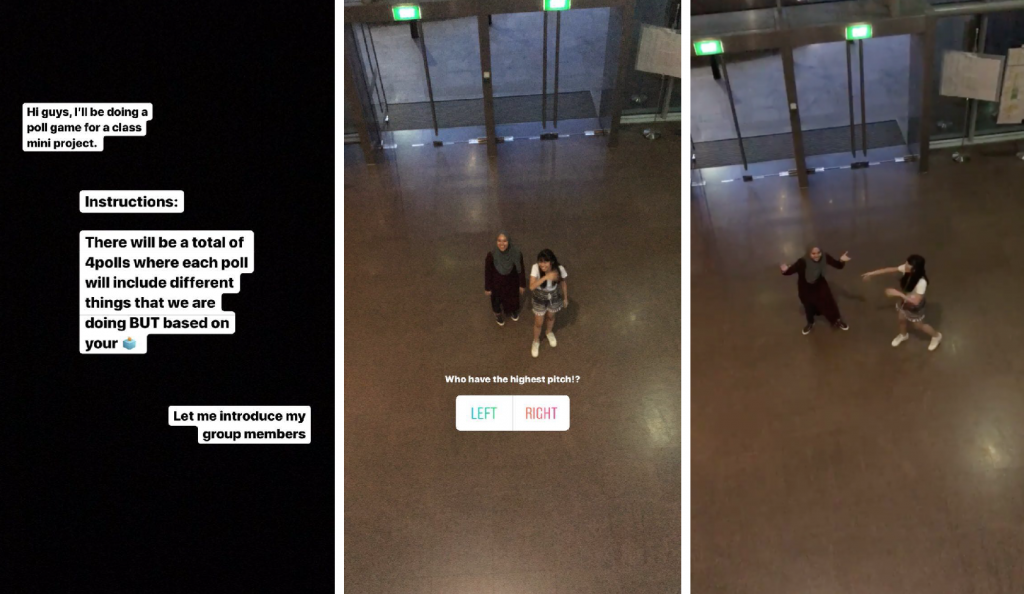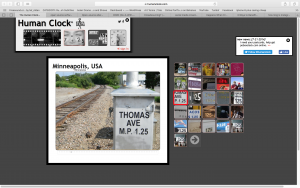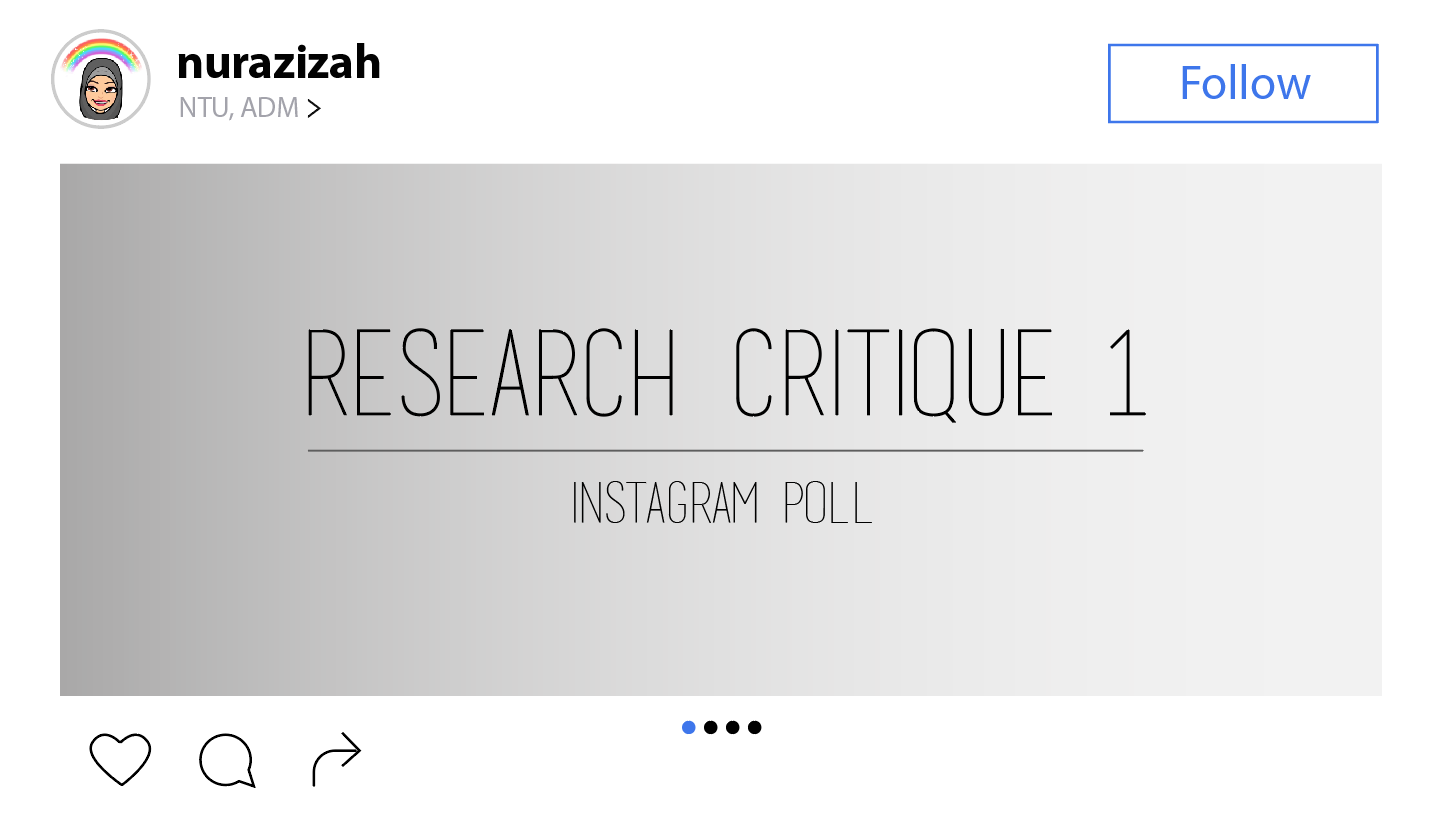Research Critique 1
- How is your crowd-sourced time-based artwork a departure from traditional art making by a single artist?
With the use of social media, Instagram, the artist will post instructions and polls of the game, asking the audience to vote, who can do better, through the polling systems. The audience have the freedom to vote between the two choices. (Fig 1.) And once they finished voting, they are able to see the result of the poll instantly. After the polling session ended, the artists will take a video of themselves competing the game against each other. This is to meet the expectation of the audience and the unknown result.
Hence this is different from traditional art making by a single artist because it enables the audience to have control of the outcome, by predicting who can do the games better.

- How is this method of peer-to-peer social interaction as found in open-source practices a departure from traditional proprietary modes of artistic creation and production?
It allow audience to input their thoughts and opinion through the polling system in Instagram. And with the power of social media and connections, not only our circles of friends are able to vote and watch the videos, but other people from different types of background and culture are able to join in the fun and input their opinion.
Quoted from Jeran Fraser, What Happens When Crowdsourcing And Social Media Merge: "From crowdsourcing their opinions on a potential product idea to building contests that invites users' thoughts, social media uses crowdsourcing as an invaluable tool more often than we realize."
- How is your crowd-sourced time-based artwork similar or different from the examples show in our open-source artists discussion?
Artwork chosen: Craig D. Giffen, Human Clock (2001 – ongoing)
Similarities
- Both works include the audience thoughts by inputting something. For Craig D. Giffen’s work, audience are able to submit images of the time and it will be shown in the website at that point of time. And for our micro project, audience are able to submit their thoughts and opinion through polling and instantly they can see the result.
- Both works are close source works as only the person, team or organization are able to maintain, control and modify it at certain time. For example Craig D. Giffen’s work, he is able to modify the layout of his website. (Fig 2.) However we, as audience, can’t modify it and we can’t control the image according to the timing. As for our micro project, we as a group can control and modify the questions we set for polling.

Differences
- Both works have different timeframe. For Craig D. Giffen’s work, he’s work is a continuous timeframe where audience can continuously submit images of the time. As for our micro project, our instruction, questions and videos has a limited timeframe. Each instruction, question, video can last up to 15 seconds as this is one of the default setting of Instagram.
Quoted from Marc Garrett, DIWO (Do-It-With-Others): Artistic Co-Creation as a Decentralized Method of Peer Empowerment in Today’s Multitude: "Even though the Web and DIWO possess different qualities they are both essentially, forms of networked commons. They both belong to the same digital complexity, each are open systems for human and technological engagement."
For our micro project, both the games and Instagram have different qualities, such as the games are played physically but the Instagram is through the web, and both of it needs a network in common. For the games, we need audience to input their thoughts by voting. Hence with the use of Instagram and the power of connections, we can easily get more people to join in and collate the votes instantly. In conclusion, social media uses crowdsourcing as a very useful tool to gain more people to participate in a common goal.

